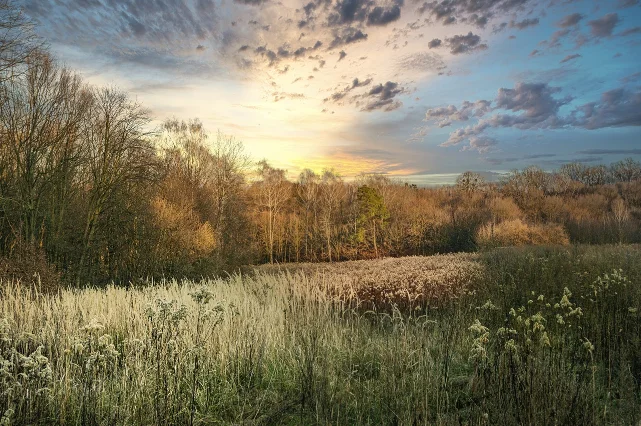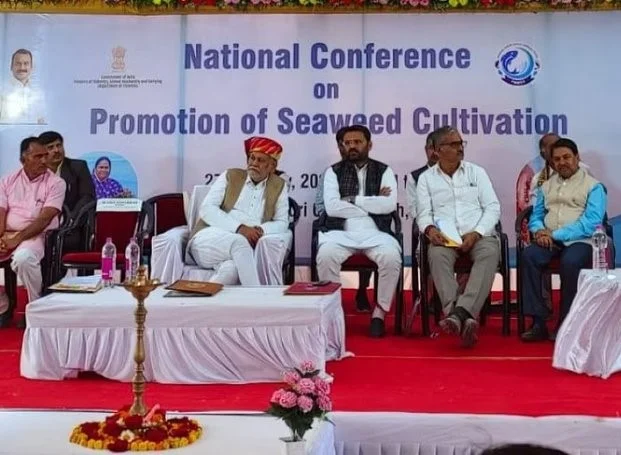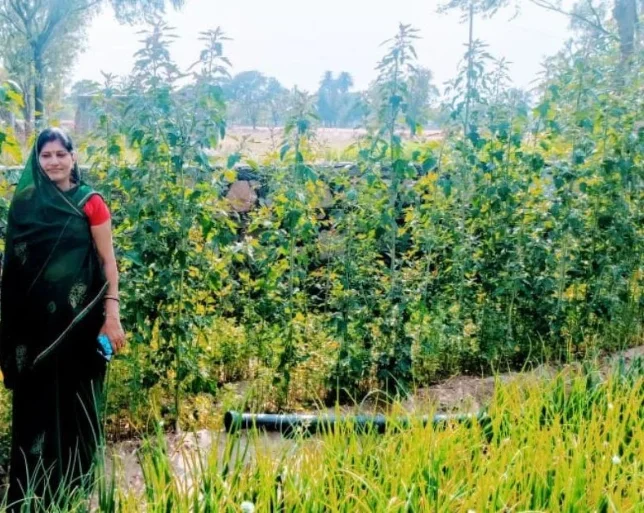Nestled on the outskirts of Jaipur, a once arid expanse of 500 acres stood devoid of life, with barely 30 struggling trees trying to survive in the harsh conditions. However, today, this very land has been transformed into a vibrant green paradise. This compelling tale is not just about revitalizing barren soil but also about embracing ancient wisdom, uniting communities, and paving the way for a new way of life.
Located 36 kilometers away from Jaipur, in the heart of Rajasthan, Phagi tehsil witnessed a shift in its agricultural landscape after a devastating flood in 1981. The aftermath of this natural disaster left the fertile topsoil decimated, plunging the villages of Phagi into a struggle for survival.
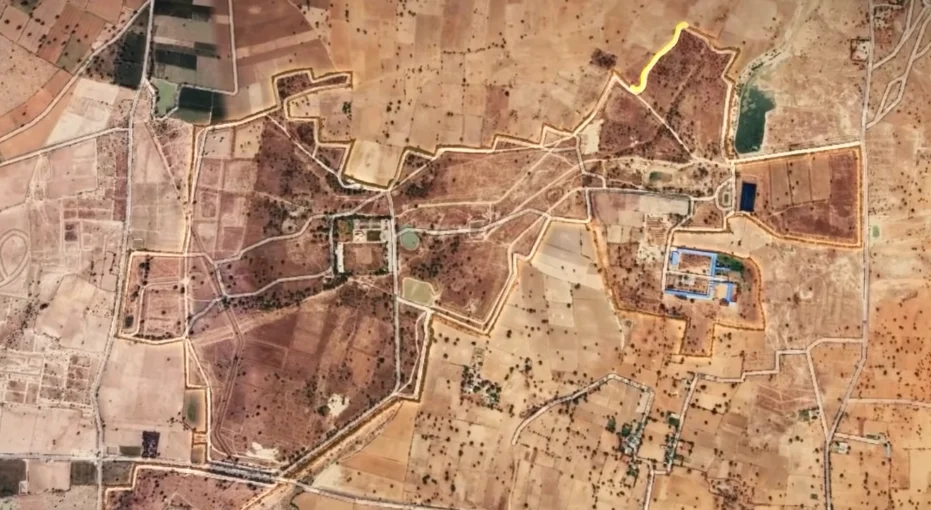
Reflecting on the past, a villager from the region shared, “There is a nearby village named Gulabpur. People of that village used to farm and rear animals on this piece of land. The land was good. People used to cultivate wheat, chickpea, barley, and mustard. But the flood destroyed everything. Slowly the land became barren.” The loss of topsoil, coupled with unsustainable farming and irrigation practices, gradually transformed the once-fertile land into a dry and dusty terrain.
Manvendra Singh Shekhawat, the visionary director of Dhun, recalls his first encounter with the land, noting, “When I saw this land for the first time, I marveled at the sheer size of it—27 kilometers from Jaipur, with less than 30 trees on 500 acres of land. As many real estate pundits declared, it was deemed to have absolutely low potential.” However, Shekhawat refused to concede defeat. Deeply influenced by the resilient communities surrounding Jaisalmer and their adept knowledge of climate-resilient practices, particularly water harvesting, he was determined to translate this wisdom into action.
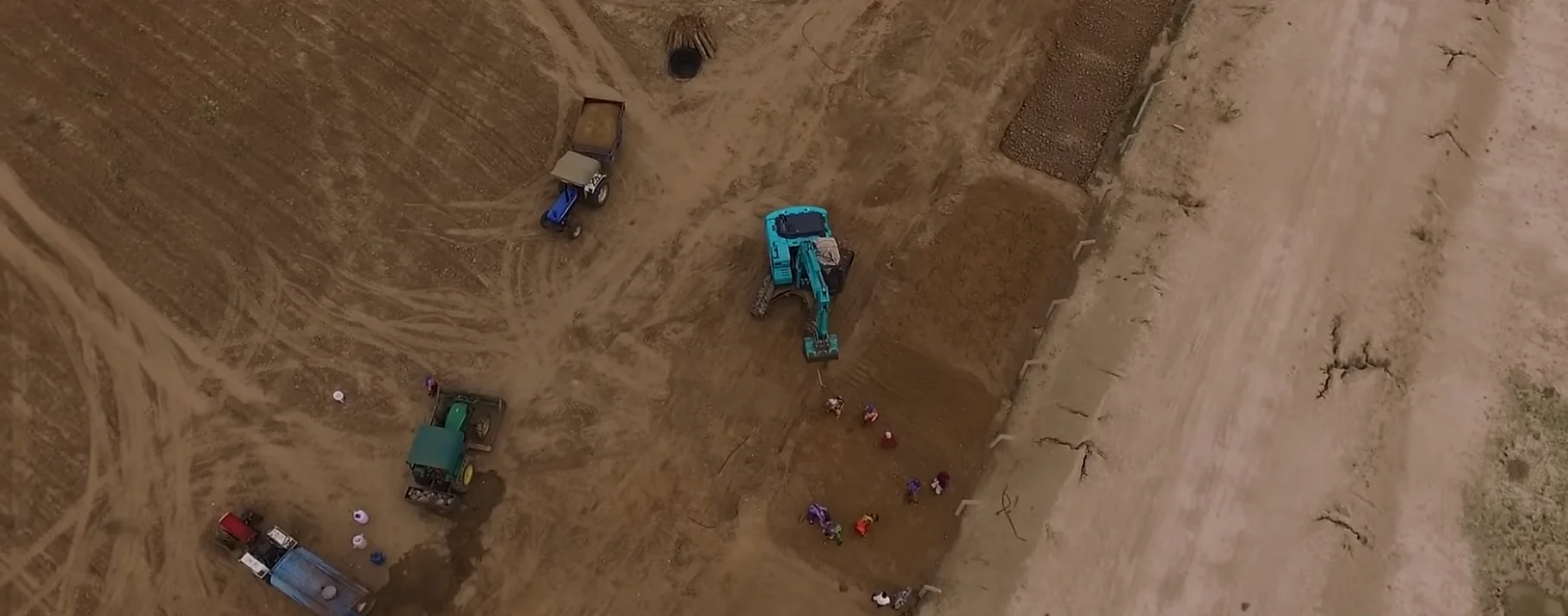
Reflecting on his inspiration, Shekhawat states, “I’ve lived in Jaisalmer for quite a while, a place that many consider just a desert. Yet, for generations, people have called it home. The secret to turning the scarce gifts of nature into a rich cultural heritage? It all starts with their skill in tapping water. So, my idea sparked when we realized the easiest thing we could do was capture the water that falls here – the lowest hanging fruit, you could say. Plus, the rainfall here is three to four times more than in Jaisalmer. That’s why we built a water reservoir, taking inspiration from the traditional ways of conserving and harvesting water in the deserts of Rajasthan.”
Blending Ancient Wisdom and Modern Tech to Transform the Land
Manvendra and his team embarked on their transformation journey by delving into the history, topography, and traditional water harvesting systems of the area. Armed with local knowledge and resources, they initiated the formidable task of excavating the first pond on community land.
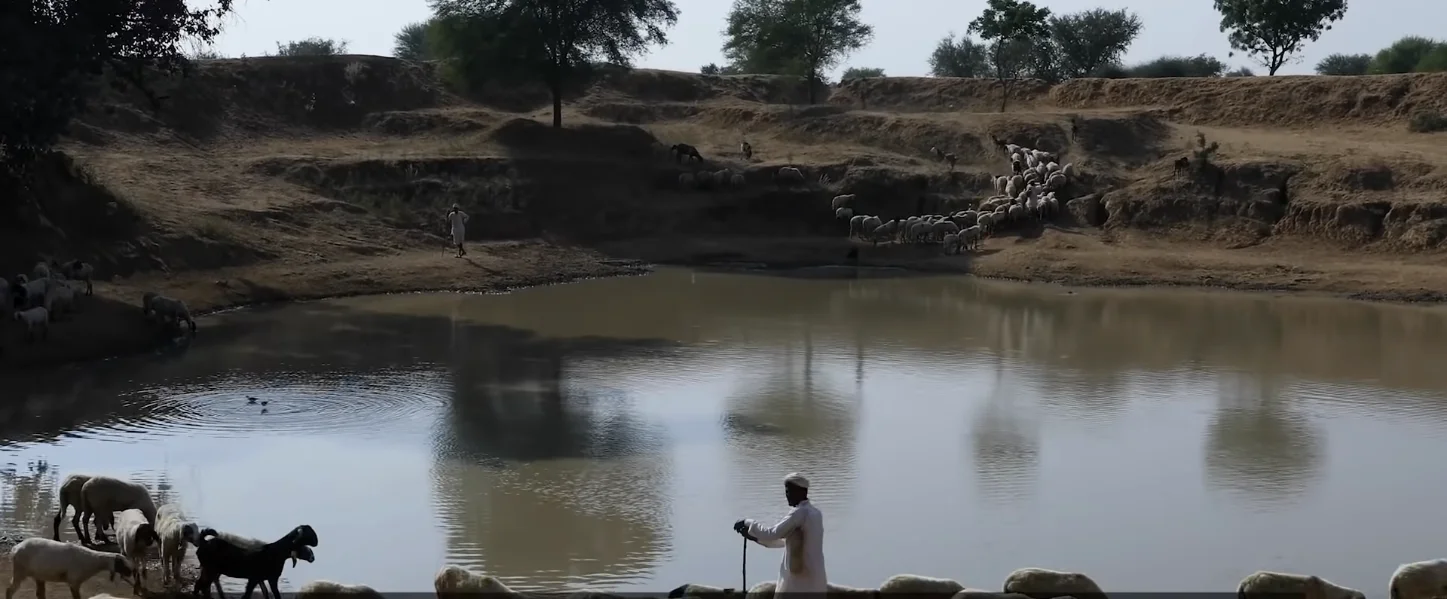
Manvendra emphasizes the importance of understanding the land’s gradient and water flow, stating, “First and foremost, we need to understand the gradient of the land. We need to understand how the water will flow. We then conducted a 20cm by 20 cm contour survey of this place. It gave us more understanding of the topography of the land. You access the vast pool of wisdom that has been generated by the living experiences of the people who have inhabited this region and synthesize it with technologies that are available to us.”
Also Read: Woman Cultivates Food Forest to Nourish and Uplift Orphans

Bringing the community together for the monumental task of digging a pond capable of holding 140 million liters of water posed a significant challenge. To put it in perspective, Farhad Contractor, ecology advisor at Dhun, explains, “140 million liters of water is enough to meet the drinking needs of 50,000 people for two whole months in India.”
Contractor outlines the detailed process, noting, “Drainage is to be marked out, catchments to be studied, and ways to strengthen catchments explored. The pond is then dug, and the embankment strengthened with grasses and trees. We need to determine where the water will come from and plan for overflow if necessary.”

After three months of strenuous efforts, the team reached their goal—the first pond, now known as ‘Galaniya Talab,’ marked a significant milestone in the land’s transformation. As the pond took its place, the landscape gradually transformed; shades of greenery emerged, instilling a newfound hope among the villagers.
The Resurgence of Life After the Ponds
After the pond was built, a villager joyfully shared, “The water levels of the wells in the village improved drastically. People have started agriculture, boosting their income. Cattle now have water, and the income of women in the village has increased. People understand the pond’s importance and actively protect it. We’ve even initiated digging two more water ponds, and they’re now receiving water too.”
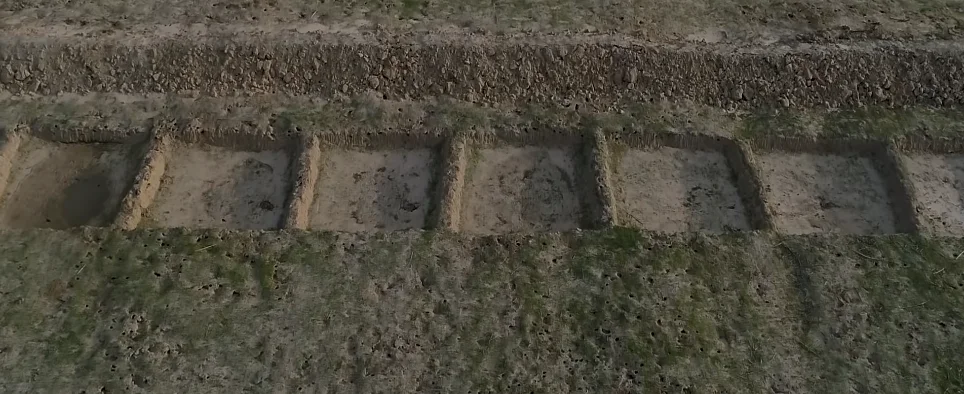
For Manvendra, the pond marked a profound shift in perspective. Witnessing the transformative power of water on the land ignited a new sense of purpose. He began envisioning the possibility of creating a thriving ecosystem on his property. His next move was clear—to dig more water bodies across the land, ensuring rainwater harvesting became a perennial feature of the area.
Also Read: Rajasthan Farmer Makes Rs. 4 Lakh per month from his Solar Farm Under PM-KUSUM Yojana
Contractor explains, “We went into building swales on that same natural drainage. We made farm bunds, which catch water, hold it, and let it percolate. These farm bunds became crucial for retaining moisture in the soil.”
Their relentless efforts and visionary approach bore fruit. Within two years, the land started to rejuvenate itself. More trees began to flourish, and the ponds teemed with life and biodiversity. What was once a barren landscape, where only crows were visible, now attracted hundreds of bird and animal species.
Today, this revitalized area boasts over 120 species of birds, 70 species of native trees, and various animals. The land has truly come back to life, demonstrating the incredible impact water can have. It’s not just about propping up life—it’s about creating a vibrant ecosystem. Manvendra’s vision extends beyond mere rejuvenation; he aspires to build a community close to nature, a sanctuary away from the chaotic and unsustainable city life, truly in harmony with the natural environment.


